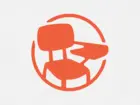
- Testimonial
- Web Stories

Learning Home

Not Now! Will rate later

MBA Case Studies - Solved Examples

Need of MBA Case Studies
Case i: chemco case.
- ChemCo is a quality leader in the U.K. car batteries market.
- Customer battery purchases in the automobile market are highly seasonal.
- The fork-lift business was added to utilize idle capacity during periods of inactivity.
- This is a low-growth industry (1% annual growth over the last two years)
- Large customers are sophisticated and buy based on price and quality. Smaller customers buy solely on price.
- There is a Spanish competitor in the market who offers low priced batteries of inferior quality.

Essential MBA GD Guide: Key Topics with Strategies Free
- Importance of Group Discussions
- Tips and Strategies to handle a GD
- Top 25 GD topics
- Free Download
- Established player in car batteries
- Losing heavily in fork-lift truck batteries
- Old fashioned owner resistance to change
- Low priced competitors
- Foreign competitors gaining market share
- Decisive Interview, GD & Essay prep
- GD: Topics 2021
- GD: Approach
- GD: Do's and Don'ts
- GD: Communications
- Solved GDs Topics
GD Introduction
- Types of GD topics: Techniques
- GD: Ettiquette
- GD: Content
- Solved Case Studies
- High quality product, but low end customers care more about price than quality
- Mismanaged product diversification in a price sensitive market
- Alternative 1: Establish an Off-Brand for the fork-lift business
- Alternative 2: Educate the customer market about product quality
- Alternative 3: Exit the fork-lift battery business
- Establishing the firm's quality image
- Increase in market share
- Increase in sales
- Cost of the product
- Protect firm's quality image in the automobile industry
- Redesigned product to reduce the cost of manufacture
- Low price to enable it to compete with Spanish producer
- Make use of the quality leadership in car batteries market
- Offer reliability testing, extended warranties etc. to promote quality image
- Set higher prices to extract surplus from these advantages
- A passive strategy, not proactive
- Recommendations: Alternative 1 is recommended in this case. Since the firm operates in an industry which has low growth, hence it can expand market share and sales only by taking the customers from other players. Hence, it needs to tackle the Spanish competitor head-on by aggressively pricing its product. At the same time, launching a low-priced product under the same brand name erodes the high quality image in the car batteries market. Hence, the best option is to go for an off-brand to target the fork-lift customers who are increasingly becoming price sensitive. This will enable the company to ward off the threat in short-term and build its position strongly in the long-term.

Case II: NAKAMURA LACQUER COMPANY
- The Nakamura Lacquer Company: The Nakamura Lacquer Company based in Kyoto, Japan was one of the many small handicraft shops making lacquerware for the daily table use of the Japanese people.
- Mr. Nakamura- the personality: In 1948, a young Mr. Nakamura took over his family business. He saw an opportunity to cater to a new market of America, i.e. GI's of the Occupation Army who had begun to buy lacquer ware as souvenirs. However, he realized that the traditional handicraft methods were inadequate. He was an innovator and introduced simple methods of processing and inspection using machines. Four years later, when the Occupation Army left in 1952, Nakamura employed several thousand men, and produced 500,000 pieces of lacquers tableware each year for the Japanese mass consumer market. The profit from operations was $250,000.
- The Brand: Nakamura named his brand “Chrysanthemum” after the national flower of Japan, which showed his patriotic fervor. The brand became Japan's best known and best selling brand, being synonymous with good quality, middle class and dependability.
- The Market: The market for lacquerware in Japan seems to have matured, with the production steady at 500,000 pieces a year. Nakamura did practically no business outside of Japan. However, early in 1960, when the American interest in Japanese products began to grow, Nakamura received two offers
- The Rose and Crown offer: The first offer was from Mr. Phil Rose, V.P Marketing at the National China Company. They were the largest manufacturer of good quality dinnerware in the U.S., with their “Rose and Crown” brand accounting for almost 30% of total sales. They were willing to give a firm order for three eyes for annual purchases of 400,000 sets of lacquer dinnerware, delivered in Japan and at 5% more than what the Japanese jobbers paid. However, Nakamura would have to forego the Chrysanthemum trademark to “Rose and Crown” and also undertaken to sell lacquer ware to anyone else the U.S. The offer promised returns of $720,000 over three years (with net returns of $83,000), but with little potential for the U.S. market on the Chrysanthemum brand beyond that period.
- The Semmelback offer: The second offer was from Mr. Walter Sammelback of Sammelback, Sammelback and Whittacker, Chicago, the largest supplier of hotel and restaurant supplies in the U.S. They perceived a U.S. market of 600,000 sets a year, expecting it to go up to 2 million in around 5 years. Since the Japanese government did not allow overseas investment, Sammelback was willing to budget $1.5 million. Although the offer implied negative returns of $467,000 over the first five years, the offer had the potential to give a $1 million profit if sales picked up as anticipated.
- Meeting the order: To meet the numbers requirement of the orders, Nakamura would either have to expand capacity or cut down on the domestic market. If he chose to expand capacity, the danger was of idle capacity in case the U.S. market did not respond. If he cut down on the domestic market, the danger was of losing out on a well-established market. Nakamura could also source part of the supply from other vendors. However, this option would not find favor with either of the American buyers since they had approached only Nakamura, realizing that he was the best person to meet the order.
- Decision problem: Whether to accept any of the two offers and if yes, which one of the two and under what terms of conditions?
- To expand into the U.S. market.
- To maintain and build upon their reputation of the “Chrysanthemum” brand
- To increase profit volumes by tapping the U.S. market and as a result, increasing scale of operations.
- To increase its share in the U.S. lacquerware market.
- Profit Maximization criterion: The most important criterion in the long run is profit maximization.
- Risk criterion: Since the demand in the U.S. market is not as much as in Japan.
- Brand identity criterion: Nakamura has painstakingly built up a brand name in Japan. It is desirable for him to compete in the U.S. market under the same brand name
- Flexibility criterion: The chosen option should offer Nakamura flexibility in maneuvering the terms and conditions to his advantage. Additionally, Nakamura should have bargaining power at the time of renewal of the contract.
- Short term returns: Nakamura should receive some returns on the investment he makes on the new offers. However, this criterion may be compromised in favor of profit maximization in the long run.?
- Reject both: React both the offers and concentrate on the domestic market
- Accept RC offer: Accept the Rose and Crown offer and supply the offer by cutting down on supplies to the domestic market or through capacity expansion or both
- Accept SSW: offer; accept the SSW offer and meet it through cutting down on supply to the domestic market or through capacity expansion or both. Negotiate term of supply.
- Reject both: This option would not meet the primary criterion of profit maximization. Further, the objective of growth would also not be met. Hence, this option is rejected.
- Accept RC offer: The RC offer would assure net returns of $283,000 over the next three yeas. It also assures regular returns of $240,000 per year. However, Nakamura would have no presence in the U.S. with its Chrysanthemum brand name The RC offer would entail capacity expansion, as it would not be possible to siphon of 275,000 pieces from the domestic market over three years without adversely affecting operations there. At the end of three years, Nakamura would have little bargaining power with RC as it would have an excess capacity of 275,000 pieces and excess labor which it would want to utilize. In this sense the offer is risky. Further, the offer is not flexible. Long-term profit maximization is uncertain in this case a condition that can be controlled in the SSW offer. Hence, this offer is rejected.
- Accept SSW offer: The SSW offer does not assure a firm order or any returns for the period of contract. Although, in its present form the offer is risky if the market in the U.S. does not pick up as expected, the offer is flexible. If Nakamura were to exhibit caution initially by supplying only 300,000 instead of the anticipated 600,000 pieces, it could siphon off the 175,000 required from the domestic market. If demand exists in the U.S., the capacity can be expanded. With this offer, risk is minimized. Further, it would be competing on its own brand name. Distribution would be taken care of and long-term profit maximization criterion would be satisfied as this option has the potential of $1 million in profits per year. At the time of renewal of the contract, Nakamura would have immense bargaining power.
- Negotiate terms of offer with SSW: The terms would be that NLC would supply 300,000 pieces in the first year. If market demand exists, NLC should expand capacity to provide the expected demand.
- Action Plan: In the first phase, NLC would supply SSW with 300,000 pieces. 125,000 of these would be obtained by utilizing excess capacity, while the remaining would be obtained from the domestic market. If the expected demand for lacquer ware exists in the U.S., NLC would expand capacity to meet the expected demand. The debt incurred would be paid off by the fifth year.
- Contingency Plan: In case the demand is not as expected in the first year, NLC should not service the U.S. market and instead concentrate on increasing penetration in the domestic market.
FAQs about MBA Case Studies
- Group Discussions
- Personality
- Past Experiences
Most Popular Articles - PS

100 Group Discussion (GD) Topics for MBA 2024

Solved GDs Topic

Top 50 Other (Science, Economy, Environment) topics for GD
5 tips for starting a GD

GD FAQs: Communication

GD FAQs: Content

Stages of GD preparation

Group Discussion Etiquettes

Case Study: Tips and Strategy

Practice Case Studies: Long

Practice Case Studies: Short
5 tips for handling Abstract GD topics
5 tips for handling a fish market situation in GD
5 things to follow: if you don’t know much about the GD topic

Do’s and Don’ts in a Group Discussion
5 tips for handling Factual GD topics

How to prepare for Group Discussion
Download our app.
- Learn on-the-go
- Unlimited Prep Resources
- Better Learning Experience
- Personalized Guidance
Get More Out of Your Exam Preparation - Try Our App!
Igniting Brilliance, Inspiring Success with Regenesys. Enrol Now --> Enrol Now
Get Free Consultation
By submitting this form, you agree to our Terms & Conditions.

The Role of Case Studies in BBA Education
Please rate this article
Join Regenesys’s 25+ Years Legacy
Awaken your potential.
The Bachelor of Business Administration (BBA) degree stands as a beacon for aspiring professionals delving into the intricate world of business. It’s a comprehensive undergraduate programme that equips students with a multifaceted understanding of business operations, strategy, and management. Central to this academic journey are case studies—rich repositories of real-world scenarios encapsulating business challenges and successes.
Table of Contents
Understanding the bba degree, the crucial role of case studies, regenesys business school.
Bachelor of Business Administration (BBA) is an undergraduate programme typically spanning three to four years. It’s designed to provide students with a comprehensive understanding of various aspects of business and management. BBA programmes cover a wide array of subjects, including finance, marketing, human resources, operations, economics, and more. The aim is to equip students with foundational knowledge and practical skills necessary for entry-level positions in the business world or to pursue further studies in specialised fields like MBA (Master of Business Administration) or other business-related disciplines. BBA programmes often emphasise critical thinking, problem-solving, communication skills, and leadership abilities to prepare students for roles in diverse industries and sectors.
Case studies serve as a bridge between theory and practice. These real-life business situations provide students with a practical lens to apply theoretical knowledge. By immersing themselves in these scenarios, BBA students comprehend the complexities of decision-making, problem-solving, and strategic planning faced by businesses.
Learning through Real-world Scenarios:
The interactive nature of case studies engages students profoundly. It encourages active participation, discussion, and debate within classrooms. Analysing these cases fosters a deeper understanding of the multifaceted dimensions of business, preparing students to navigate the complexities of the corporate world.
Enhancing Analytical and Decision-Making Skills:
Case studies compel students to think critically. They are tasked with dissecting problems, identifying key issues, and devising viable solutions. This process hones analytical prowess and nurtures the ability to make informed decisions—a cornerstone of effective business leadership.
Preparation for Real Business Challenges:
Exposure to diverse case studies prepares students for real-world challenges. The diverse scenarios presented in these studies mirror the dynamic landscape of businesses, offering a glimpse into the intricacies and unpredictabilities of the corporate sphere.
Regenesys Business School stands tall as an innovative institution, redefining business education through innovation and inclusivity. Rooted in a commitment to empowering individuals with accessible yet high-quality education, Regenesys fosters an environment where aspiring business leaders thrive. The school’s approach blends academic rigour with practical relevance, ensuring that students grasp theoretical concepts and gain hands-on experience. With a faculty comprised of industry experts and thought leaders, Regenesys cultivates a learning atmosphere that encourages critical thinking, creativity, and adaptability—essential traits for success in today’s dynamic business landscape. Through a range of programmes and a global perspective, Regenesys Business School paves the way for individuals to carve their paths in the world of business with confidence and expertise.
Regenesys Business School’s Approach
At Regenesys, the BBA Programme is meticulously curated to offer a comprehensive learning experience. It integrates case studies as a fundamental aspect of the curriculum. Through a blend of theoretical frameworks and practical applications, students at Regenesys gain a holistic understanding of business dynamics.

In conclusion, the role of case studies within the Bachelor of Business Administration (BBA) education journey is indispensable. These real-world scenarios serve as catalysts, bridging theory with practical application and preparing students for the complexities of the business world. Regenesys Business School stands at the forefront, embracing the transformative power of case studies within its comprehensive BBA Programme. By integrating theoretical frameworks with real-life situations, Regenesys empowers students to emerge as adaptable, insightful, and solution-oriented leaders ready to navigate the challenges and opportunities of the global business arena. Through Regenesys’ commitment to excellence and holistic education, aspiring business professionals embark on a transformative journey towards success.
For further details on Regenesys’ Bachelor of Business Administration Programme, visit Regenesys BBA Programme .
1. What is the significance of case studies in a BBA programme?
Answer: Case studies play a vital role by offering real-world business scenarios that help bridge theoretical learning with practical application. They provide a platform for students to apply business theories to actual situations, enhancing critical thinking and problem-solving skills.
2. How do case studies contribute to a BBA student’s learning experience?
Answer: Case studies engage students actively by encouraging discussion and debate, fostering a deeper understanding of business complexities. They prepare students to analyse and tackle multifaceted challenges they might encounter in their future careers.
3. Why are analytical and decision-making skills emphasised in BBA education through case studies?
Answer: Analytical and decision-making skills are crucial in business. Case studies challenge students to identify key issues, analyse data, and formulate viable solutions, preparing them for real-world decision-making scenarios.
4. What role does Regenesys Business School play in integrating case studies into its BBA Programme?
Answer: Regenesys Business School integrates case studies as a fundamental component of its BBA curriculum. By combining theoretical concepts with real-world applications, the school provides a holistic learning experience for its students.
5. How do case studies prepare BBA students for the challenges of the corporate world?
Answer: Exposure to diverse case studies prepares students for the unpredictability and complexities of the corporate world. Through these studies, students gain insights into various industries and business dynamics, enhancing their readiness for real-world challenges.
6. What makes the BBA Programme at Regenesys unique in terms of case study integration?
Answer: The BBA Programme at Regenesys stands out for its comprehensive approach to case studies. By combining theoretical knowledge with practical insights, the programme ensures students acquire a nuanced understanding of business scenarios, enabling them to become adaptable and insightful business leaders.
- Latest Posts
- Master of Public Management (MPM) in South Africa: A Comprehensive Overview - December 13, 2023
- Career Pathways Jobs and Opportunities: Regenesys School of Public Management - December 13, 2023
- The Art of Policy Analysis: Skills Developed in Postgraduate Programmes (PDPM) - December 13, 2023
Vaibhav Gangavane
Bachelor of Mass Media Vaibhav has been writing Social Media & SEO-based content on various platforms for niches.
Related Posts
Bbpress public forum.

Unlocking Opportunities: Higher Certificate In Business Management (HCBM)
Write a comment cancel reply.
Save my name, email, and website in this browser for the next time I comment.
- Explore Courses
- Digital Programmes
- Digital Regenesys
7 Favorite Business Case Studies to Teach—and Why
Explore more.
- Case Teaching
- Course Materials
FEATURED CASE STUDIES
The Army Crew Team . Emily Michelle David of CEIBS
ATH Technologies . Devin Shanthikumar of Paul Merage School of Business
Fabritek 1992 . Rob Austin of Ivey Business School
Lincoln Electric Co . Karin Schnarr of Wilfrid Laurier University
Pal’s Sudden Service—Scaling an Organizational Model to Drive Growth . Gary Pisano of Harvard Business School
The United States Air Force: ‘Chaos’ in the 99th Reconnaissance Squadron . Francesca Gino of Harvard Business School
Warren E. Buffett, 2015 . Robert F. Bruner of Darden School of Business
To dig into what makes a compelling case study, we asked seven experienced educators who teach with—and many who write—business case studies: “What is your favorite case to teach and why?”
The resulting list of case study favorites ranges in topics from operations management and organizational structure to rebel leaders and whodunnit dramas.
1. The Army Crew Team
Emily Michelle David, Assistant Professor of Management, China Europe International Business School (CEIBS)

“I love teaching The Army Crew Team case because it beautifully demonstrates how a team can be so much less than the sum of its parts.
I deliver the case to executives in a nearby state-of-the-art rowing facility that features rowing machines, professional coaches, and shiny red eight-person shells.
After going through the case, they hear testimonies from former members of Chinese national crew teams before carrying their own boat to the river for a test race.
The rich learning environment helps to vividly underscore one of the case’s core messages: competition can be a double-edged sword if not properly managed.

Executives in Emily Michelle David’s organizational behavior class participate in rowing activities at a nearby facility as part of her case delivery.
Despite working for an elite headhunting firm, the executives in my most recent class were surprised to realize how much they’ve allowed their own team-building responsibilities to lapse. In the MBA pre-course, this case often leads to a rich discussion about common traps that newcomers fall into (for example, trying to do too much, too soon), which helps to poise them to both stand out in the MBA as well as prepare them for the lateral team building they will soon engage in.
Finally, I love that the post-script always gets a good laugh and serves as an early lesson that organizational behavior courses will seldom give you foolproof solutions for specific problems but will, instead, arm you with the ability to think through issues more critically.”
2. ATH Technologies
Devin Shanthikumar, Associate Professor of Accounting, Paul Merage School of Business

“As a professor at UC Irvine’s Paul Merage School of Business, and before that at Harvard Business School, I have probably taught over 100 cases. I would like to say that my favorite case is my own, Compass Box Whisky Company . But as fun as that case is, one case beats it: ATH Technologies by Robert Simons and Jennifer Packard.
ATH presents a young entrepreneurial company that is bought by a much larger company. As part of the merger, ATH gets an ‘earn-out’ deal—common among high-tech industries. The company, and the class, must decide what to do to achieve the stretch earn-out goals.
ATH captures a scenario we all want to be in at some point in our careers—being part of a young, exciting, growing organization. And a scenario we all will likely face—having stretch goals that seem almost unreachable.
It forces us, as a class, to really struggle with what to do at each stage.
After we read and discuss the A case, we find out what happens next, and discuss the B case, then the C, then D, and even E. At every stage, we can:
see how our decisions play out,
figure out how to build on our successes, and
address our failures.
The case is exciting, the class discussion is dynamic and energetic, and in the end, we all go home with a memorable ‘ah-ha!’ moment.
I have taught many great cases over my career, but none are quite as fun, memorable, and effective as ATH .”
3. Fabritek 1992
Rob Austin, Professor of Information Systems, Ivey Business School

“This might seem like an odd choice, but my favorite case to teach is an old operations case called Fabritek 1992 .
The latest version of Fabritek 1992 is dated 2009, but it is my understanding that this is a rewrite of a case that is older (probably much older). There is a Fabritek 1969 in the HBP catalog—same basic case, older dates, and numbers. That 1969 version lists no authors, so I suspect the case goes even further back; the 1969 version is, I’m guessing, a rewrite of an even older version.
There are many things I appreciate about the case. Here are a few:
It operates as a learning opportunity at many levels. At first it looks like a not-very-glamorous production job scheduling case. By the end of the case discussion, though, we’re into (operations) strategy and more. It starts out technical, then explodes into much broader relevance. As I tell participants when I’m teaching HBP's Teaching with Cases seminars —where I often use Fabritek as an example—when people first encounter this case, they almost always underestimate it.
It has great characters—especially Arthur Moreno, who looks like a troublemaker, but who, discussion reveals, might just be the smartest guy in the factory. Alums of the Harvard MBA program have told me that they remember Arthur Moreno many years later.
Almost every word in the case is important. It’s only four and a half pages of text and three pages of exhibits. This economy of words and sparsity of style have always seemed like poetry to me. I should note that this super concise, every-word-matters approach is not the ideal we usually aspire to when we write cases. Often, we include extra or superfluous information because part of our teaching objective is to provide practice in separating what matters from what doesn’t in a case. Fabritek takes a different approach, though, which fits it well.
It has a dramatic structure. It unfolds like a detective story, a sort of whodunnit. Something is wrong. There is a quality problem, and we’re not sure who or what is responsible. One person, Arthur Moreno, looks very guilty (probably too obviously guilty), but as we dig into the situation, there are many more possibilities. We spend in-class time analyzing the data (there’s a bit of math, so it covers that base, too) to determine which hypotheses are best supported by the data. And, realistically, the data doesn’t support any of the hypotheses perfectly, just some of them more than others. Also, there’s a plot twist at the end (I won’t reveal it, but here’s a hint: Arthur Moreno isn’t nearly the biggest problem in the final analysis). I have had students tell me the surprising realization at the end of the discussion gives them ‘goosebumps.’
Finally, through the unexpected plot twist, it imparts what I call a ‘wisdom lesson’ to young managers: not to be too sure of themselves and to regard the experiences of others, especially experts out on the factory floor, with great seriousness.”
4. Lincoln Electric Co.
Karin Schnarr, Assistant Professor of Policy, Wilfrid Laurier University

“As a strategy professor, my favorite case to teach is the classic 1975 Harvard case Lincoln Electric Co. by Norman Berg.
I use it to demonstrate to students the theory linkage between strategy and organizational structure, management processes, and leadership behavior.
This case may be an odd choice for a favorite. It occurs decades before my students were born. It is pages longer than we are told students are now willing to read. It is about manufacturing arc welding equipment in Cleveland, Ohio—a hard sell for a Canadian business classroom.
Yet, I have never come across a case that so perfectly illustrates what I want students to learn about how a company can be designed from an organizational perspective to successfully implement its strategy.
And in a time where so much focus continues to be on how to maximize shareholder value, it is refreshing to be able to discuss a publicly-traded company that is successfully pursuing a strategy that provides a fair value to shareholders while distributing value to employees through a large bonus pool, as well as value to customers by continually lowering prices.
However, to make the case resonate with today’s students, I work to make it relevant to the contemporary business environment. I link the case to multimedia clips about Lincoln Electric’s current manufacturing practices, processes, and leadership practices. My students can then see that a model that has been in place for generations is still viable and highly successful, even in our very different competitive situation.”
5. Pal’s Sudden Service—Scaling an Organizational Model to Drive Growth
Gary Pisano, Professor of Business Administration, Harvard Business School

“My favorite case to teach these days is Pal’s Sudden Service—Scaling an Organizational Model to Drive Growth .
I love teaching this case for three reasons:
1. It demonstrates how a company in a super-tough, highly competitive business can do very well by focusing on creating unique operating capabilities. In theory, Pal’s should have no chance against behemoths like McDonalds or Wendy’s—but it thrives because it has built a unique operating system. It’s a great example of a strategic approach to operations in action.
2. The case shows how a strategic approach to human resource and talent development at all levels really matters. This company competes in an industry not known for engaging its front-line workers. The case shows how engaging these workers can really pay off.
3. Finally, Pal’s is really unusual in its approach to growth. Most companies set growth goals (usually arbitrary ones) and then try to figure out how to ‘backfill’ the human resource and talent management gaps. They trust you can always find someone to do the job. Pal’s tackles the growth problem completely the other way around. They rigorously select and train their future managers. Only when they have a manager ready to take on their own store do they open a new one. They pace their growth off their capacity to develop talent. I find this really fascinating and so do the students I teach this case to.”
6. The United States Air Force: ‘Chaos’ in the 99th Reconnaissance Squadron
Francesca Gino, Professor of Business Administration, Harvard Business School

“My favorite case to teach is The United States Air Force: ‘Chaos’ in the 99th Reconnaissance Squadron .
The case surprises students because it is about a leader, known in the unit by the nickname Chaos , who inspired his squadron to be innovative and to change in a culture that is all about not rocking the boat, and where there is a deep sense that rules should simply be followed.
For years, I studied ‘rebels,’ people who do not accept the status quo; rather, they approach work with curiosity and produce positive change in their organizations. Chaos is a rebel leader who got the level of cultural change right. Many of the leaders I’ve met over the years complain about the ‘corporate culture,’ or at least point to clear weaknesses of it; but then they throw their hands up in the air and forget about changing what they can.
Chaos is different—he didn’t go after the ‘Air Force’ culture. That would be like boiling the ocean.
Instead, he focused on his unit of control and command: The 99th squadron. He focused on enabling that group to do what it needed to do within the confines of the bigger Air Force culture. In the process, he inspired everyone on his team to be the best they can be at work.
The case leaves the classroom buzzing and inspired to take action.”
7. Warren E. Buffett, 2015
Robert F. Bruner, Professor of Business Administration, Darden School of Business

“I love teaching Warren E. Buffett, 2015 because it energizes, exercises, and surprises students.
Buffett looms large in the business firmament and therefore attracts anyone who is eager to learn his secrets for successful investing. This generates the kind of energy that helps to break the ice among students and instructors early in a course and to lay the groundwork for good case discussion practices.
Studying Buffett’s approach to investing helps to introduce and exercise important themes that will resonate throughout a course. The case challenges students to define for themselves what it means to create value. The case discussion can easily be tailored for novices or for more advanced students.
Either way, this is not hero worship: The case affords a critical examination of the financial performance of Buffett’s firm, Berkshire Hathaway, and reveals both triumphs and stumbles. Most importantly, students can critique the purported benefits of Buffett’s conglomeration strategy and the sustainability of his investment record as the size of the firm grows very large.
By the end of the class session, students seem surprised with what they have discovered. They buzz over the paradoxes in Buffett’s philosophy and performance record. And they come away with sober respect for Buffett’s acumen and for the challenges of creating value for investors.
Surely, such sobriety is a meta-message for any mastery of finance.”
More Educator Favorites

Emily Michelle David is an assistant professor of management at China Europe International Business School (CEIBS). Her current research focuses on discovering how to make workplaces more welcoming for people of all backgrounds and personality profiles to maximize performance and avoid employee burnout. David’s work has been published in a number of scholarly journals, and she has worked as an in-house researcher at both NASA and the M.D. Anderson Cancer Center.

Devin Shanthikumar is an associate professor and the accounting area coordinator at UCI Paul Merage School of Business. She teaches undergraduate, MBA, and executive-level courses in managerial accounting. Shanthikumar previously served on the faculty at Harvard Business School, where she taught both financial accounting and managerial accounting for MBAs, and wrote cases that are used in accounting courses across the country.

Robert D. Austin is a professor of information systems at Ivey Business School and an affiliated faculty member at Harvard Medical School. He has published widely, authoring nine books, more than 50 cases and notes, three Harvard online products, and two popular massive open online courses (MOOCs) running on the Coursera platform.

Karin Schnarr is an assistant professor of policy and the director of the Bachelor of Business Administration (BBA) program at the Lazaridis School of Business & Economics at Wilfrid Laurier University in Waterloo, Ontario, Canada where she teaches strategic management at the undergraduate, graduate, and executive levels. Schnarr has published several award-winning and best-selling cases and regularly presents at international conferences on case writing and scholarship.

Gary P. Pisano is the Harry E. Figgie, Jr. Professor of Business Administration and senior associate dean of faculty development at Harvard Business School, where he has been on the faculty since 1988. Pisano is an expert in the fields of technology and operations strategy, the management of innovation, and competitive strategy. His research and consulting experience span a range of industries including aerospace, biotechnology, pharmaceuticals, specialty chemicals, health care, nutrition, computers, software, telecommunications, and semiconductors.

Francesca Gino studies how people can have more productive, creative, and fulfilling lives. She is a professor at Harvard Business School and the author, most recently, of Rebel Talent: Why It Pays to Break the Rules at Work and in Life . Gino regularly gives keynote speeches, delivers corporate training programs, and serves in advisory roles for firms and not-for-profit organizations across the globe.

Robert F. Bruner is a university professor at the University of Virginia, distinguished professor of business administration, and dean emeritus of the Darden School of Business. He has also held visiting appointments at Harvard and Columbia universities in the United States, at INSEAD in France, and at IESE in Spain. He is the author, co-author, or editor of more than 20 books on finance, management, and teaching. Currently, he teaches and writes in finance and management.
Related Articles

We use cookies to understand how you use our site and to improve your experience, including personalizing content. Learn More . By continuing to use our site, you accept our use of cookies and revised Privacy Policy .
Entrepreneurship Case Studies
Fieldfresh foods.

Mukesh Pandey, K Sudhir, Raman Ahuja, and Deepali Tewari Customer/Marketing, Entrepreneurship, Operations
By 2010, the FieldFresh team had been able to create an efficient supply chain for baby corn across Punjab and Maharashtra at all levels. But success brought with it the expectation of growth. Should FieldFresh grow opportunistically into different foreign markets as retailers and wholesalers demanded different products for their respective markets? Should FieldFresh continue to focus on baby corn, whose supply chain-market linkages it had perfected, or should the company expand the range of products it would supply? Should FieldFresh continue to maintain its primary export focus, or shift relative emphasis to the growing domestic market?

DonorsChoose.org

Anna Blanding, Jennifer Stredler, Kim Su, Ivy Washington, Sharon Oster, Jaan Elias and Andrea R. Nagy
Customer/Marketing, Entrepreneurship, Operations, Social Enterprise
After an auspicious start, Charles Best (Yale College ’98) and DonorsChoose.org set their sights on growing beyond New York City. Supported by a $14 million grant from Silicon Valley executives in 2005, DonorsChoose.org scaled up its organization and began a step-by-step expansion into various locales. By 2009, the organization had made great strides toward completing its expansion. However, observers wondered whether DonorsChoose.org could reach its goal of providing $100 million per year in gifts to classrooms and whether it would have an impact on the fundamental inequities within the educational system.

James Baron and Jaan Elias
Employee/HR, Entrepreneurship, Ethics & Religion
AgBiome co-founders, Scott Uknes and Eric Ward, were admirers of self-managed organizations and commitment culture, approaches to organizational structure and process that encouraged openness and collaboration. Accordingly, they built AgBiome to operate without supervisory relationships, job titles, formal performance evaluations, and individual performance bonuses. Instead, AgBiome relied on a committee structure that encouraged people with the greatest expertise to make decisions on matters within their ambit. By 2017, AgBiome employed 80 people and was projecting further expansion. But observers wondered, could a company, which worked on the basis of commitment and without a hierarchy, scale?
The Alibaba Group
Yi guo,yao jing, charles liu, michelle wang, jaan elias, and zhiwu chen.
Competitor/Strategy, Entrepreneurship, Investor/Finance, Law & Contracts
By July of 2011, Yun “Jack” Ma had achieved his goal of creating one of the world’s leading e-commerce companies. Ma founded the Alibaba Group and took advantage of growing internet usage in China to launch the leading B2B, C2C and B2C sites in the country and capture a huge market. Despite his success, Ma had a troubled relationship with Yahoo!, the largest investor in the Alibaba Group. Ma’s decision in January of 2011 to transfer Alipay (the Alibaba Group’s online payment unit) from the Alibaba Group to a company under his personal control was just making matters worse.
What is Next? Search Fund Entrepreneurs Reflect on Life After Exit
A.j. wasserstein.
Entrepreneurship, Investor/Finance, Leadership & Teamwork
During his time at the Yale School of Management, Matt Dittrich (Yale SOM ‘18) became interested in how recent MBA students gathered search funds, structured small acquisitions, propelled themselves into being a CEO, and then participated in a liquidity event only a few years after acquisition and graduation. He appreciated the case studies about entrepreneurs facing acquisition, strategy, and financing issues. But what did entrepreneurs do after their exits? At the urging of his teacher, A.J. Wasserstein, he interviewed former search fund entrepreneurs who had experienced an exit to learn what exactly they chose to do, and why. Overcome by curiosity, Dittrich was excited to begin his informational interviews (summaries included here).
Advanced Leadership 2016
Jaan elias, james quinn and james baron.
Employee/HR, Entrepreneurship, Innovation & Design, Leadership & Teamwork, Social Enterprise
Biographies of the following seven leaders are provided:
- Rodney O’Neal, Delphi,
- Neal Keny-Guyer, Mercy Corps,
- David Cote, Honeywell,
- Linda Mason, Bright Horizons,
- General Stanley McChrystal, United States Military,
- Donna Dubinsky, Numenta, and (7) Laszlo Bock, Google.
Mike Erwin: An Accidental Social Entrepreneur
A. j. wasserstein.
Mike Erwin, a decorated army veteran from West Point, never envisioned himself as a social entrepreneur or activist. Yet in 2012, he found himself the CEO of an organization with 15,000 members and 34 chapters reaching from Syracuse, NY to Houston, TX. Though Erwin was proud of his organization’s growth and had excelled in leadership positions, he questioned whether he was the right person to scale Team Red, White and Blue. Would someone else with more experience be more appropriate? If he indeed moved on, how could he ensure the organization would continue to thrive amid a change in leadership and potential restructuring?
Searching for a Search Fund Structure: A Student Takes a Tour of Various Options
Employee/HR, Entrepreneurship
Before entering the Yale School of Management, James Guba (SOM’18) had thought about becoming an entrepreneur. He did not have a specific idea to build a business around, but he did aspire to take charge of an organization and grow it. At Yale, Guba discovered an entrepreneurial niche called “search funds” that would allow him to acquire and lead a company that he had not built from scratch. Inspired, Guba met with search fund entrepreneurs to learn about their different paths to building their funds.
Kalil Diaz: A DR-based search firm considers its first acquisition
Customer/Marketing, Entrepreneurship
After nearly two years of searching, Kalil Diaz (SOM '14) wondered if he had finally found the company for which he had been looking. The decision he was facing would have a big impact on his investors as well as his own life. He was somewhat confident he could access funds from his current investors to purchase the company despite several investors being slow in their response to commit. However, Diaz still wondered if making the investment was the right move. How would he transition from the search to being CEO and running a company? Would the acquisition provide suitable financial returns for his investors and himself?
Clorox, Inc
Elise rindfleisch and allison mitkowski.
Customer/Marketing, Entrepreneurship, Sustainability
In October 2007, Clorox announced that it would buy Burt’s Bees for $925 million – more than five times Burt’s Bees’ annual sales. Clorox’s move caught many in the industry by surprise - Burt’s Bees had a folksy image and natural appeal for customers. Could such a brand find a home within a company best known for a toxic cleanser? Would Clorox’s push into “green” cleaners satisfy Burt’s Bees’ faithful customers? Had Clorox paid too much for its acquisition? Or, were there potential synergies that justified the purchase? What was the future of this market?
Project Masiluleke: Texting and Testing to Fight HIV/AIDS in South Africa
Rodrigo canales, jean rosenthal, jaan elias, and william drenttel.
Entrepreneurship, Healthcare, Innovation & Design, Social Enterprise
The traditional Zulu greeting, "Sawubona," literally translates as "I see you." The major challenge faced by Project Masiluleke could be captured in this local greeting – could Project M see the lives of the individuals they hoped to help? Could they find ways to understand each other and the individuals threatened by HIV/AIDS well enough to design effective solutions to a major health crisis? PopTech, frog design, and the Praekelt Foundation joined with iTeach, an HIV/AIDS and TB prevention and treatment program, to look for new approaches to address South Africa's health issues. Access to this case has been made freely available to the public.
Project Samaan
Rodrigo canales, jean rosenthal, jaan elias, ashley pandya and samuel sturm.
Entrepreneurship, Healthcare, Innovation & Design, Social Enterprise, State & Society, Sustainability
In a unique partnership, governments, designers, architects, academics, and NGOs had come together to create new sanitation solutions for India's urban slums. Specifically, the group set about tackling one of the developing world's leading problems – open defecation in crowded urban settings. But by fall 2013, not a single community toilet had been approved. What had gone wrong? And what could this experience teach others about an overall solution to the problem?
San Miguel: Expanding the Amaranth Market
Jaan elias, mario alan gonzález hernández, carlos gil garcía, rodrigo canales, and kaveh khoshnood.
Competitor/Strategy, Customer/Marketing, Employee/HR, Entrepreneurship, Innovation & Design, Leadership & Teamwork, Operations, Social Enterprise
San Miguel, a small Amaranth processing company in Huixcazdhá, Mexico, was started as a development project to sustainably employ local residents. Despite the plant’s rural location and unschooled workforce, the company pioneered the processing of amaranth into a number of unique products. Though the company yielded a small but steady profit, the plant was operating at only 20 percent of capacity and the organization lacked a coherent marketing strategy. What new markets could the company target and what communications strategy should it employ?
Haiti Mangoes
Andrea nagy smith and douglas rae.
Entrepreneurship, Operations, Social Enterprise, State & Society
JMB S.A. had been in the mango processing business since 1998, and CEO Jean-Maurice Buteau had built up a profitable business that exported around 2,000 tons of mangoes per year. The January 2010 earthquake devastated Haiti, but JMB appeared to survive intact, and the Soros Economic Development Fund (SEDF) was eager to move forward. In spring 2010 SEDF proceeded with a $1.3 million loan and a $1 million equity investment in JMB. But by spring 2012, after pouring $2.55 million into JMB, SEDF realized that it had to make a decision: invest another $2 million and reorganize the company under new management; sell the company, or shut down JMB S.A. altogether.
Allison Mitkowski, Alexandra Barton-Sweeney, Tony Sheldon, Arthur Janik, and Jaan Elias
Customer/Marketing, Innovation & Design, Social Enterprise, State & Society, Sustainability
In 2009, SELCO was considering its plans for how the company might expand. The company decided to institutionalize its design process by building an innovation center. SELCO also added products that provided energy solutions beyond solar. Some within the company were hoping the company would go “deeper” and look at designing solutions for even poorer members of the Indian population. Others were hoping that the company would go “wider” and expand beyond its current geographical areas in Karnataka and Gujarat. Whatever its direction, the strategic choices the company made at this point in its evolution would be crucial to determining its continued success.
360 State Street: Real Options
Andrea nagy smith and mathew spiegel.
Asset Management, Investor/Finance, Metrics & Data, Sourcing/Managing Funds
In 2010 developer Bruce Becker completed 360 State Street, a major new construction project in downtown New Haven. The building was a 32-story high-rise with 500 apartments, a parking garage, and a grocery store on the street level. In the summer of 2013, Becker had a number of alternatives to consider in regards to the open lot adjacent to his recent construction. He also had no obligation to build. He could bide his time. But Becker also worried about losing out on rents should he wait too long. Under what set of circumstances and at what time would it be most advantageous to proceed?
Achievement First
Fawzia ahmed, jaan elias, and sharon oster.
Social Enterprise, State & Society
On the edges of a warehouse district in New Haven, Connecticut, an intrepid group of educational pioneers were turning conventional theory on its head. Amistad Academy, a charter school founded by two Yale Law School graduates, was not only getting students on par with their grade levels in reading and math, but was pushing them to perform as well as the best suburban school districts too. Five years after opening Amistad, McCurry and Toll opened an additional school in New Haven and four schools in Brooklyn, New York – all of which showed the same promise as Amistad. They dubbed their network of schools Achievement First (AF), and garnered national attention and funding from “venture philanthropists” interested in educational reform. However, in the summer of 2006, AF was facing critical questions about its future direction.
Ravi Dhar and Andrea Nagy Smith
Competitor/Strategy, Customer/Marketing, Investor/Finance, Operations
At the time of its IPO filing, Groupon held the lead among group buying sites, a 52-percent market share of revenue generated, according to the group-buying site aggregator Yipit. But many questions remained about its future. Would Groupon’s labor-intensive business model prove profitable? Would customers and merchants be loyal to Groupon? Would other companies take its business? In summer 2011 it was far from sure that the young company could maintain its lead.
Carry Trade ETF
K. geert rouwenhorst, jean w. rosenthal, and jaan elias.
Innovation & Design, Investor/Finance, Macroeconomics, Sourcing/Managing Funds
In 2006 Deutsche Bank (DB) brought a new product to market – an exchange traded fund (ETF) based on the carry trade, a strategy of buying and selling currency futures. The offering received the William F. Sharpe Indexing Achievement Award for “Most Innovative Index Fund or ETF” at the 2006 Sharpe Awards. These awards are presented annually by IndexUniverse.com and Information Management Network for innovative advances in the indexing industry. The carry trade ETF shared the award with another DB/PowerShares offering, a Commodity Index Tracking Fund. Jim Wiandt, publisher of IndexUniverse.com, said, "These innovators are shaping the course of the index industry, creating new tools and providing new insights for the benefit of all investors." What was it that made this financial innovation successful?
Governors Island
Entrepreneurship, Innovation & Design, Social Enterprise, State & Society
The political players had changed since President Clinton and Senator Moynihan’s helicopter ride. Clinton was no longer President, his wife had taken Moynihan’s seat in the Senate and Michael Bloomberg had replaced Rudolph Giuliani as New York’s Mayor. What remained the same was that the city, state, and federal government had yet to reach a deal. The question of what to do with Governors Island and who should do it remained very much open. Indeed, there were those within the new Bush administration and the Congress who believed in scrapping Clinton and Moynihan’s deal and selling the island to the highest bidder be that the local government or a private developer.
Ant Financial: Flourishing Farmer Loans at MYbank
Jingyue xu, jean rosenthal, k. sudhir, hua song, xia zhang, yuanfang song, xiaoxi liu, and jaan elias.
Competitor/Strategy, Customer/Marketing, Entrepreneurship, Innovation & Design, Investor/Finance, Leadership & Teamwork, Operations, State & Society
In 2015, Ant Financial’s MYbank (an offshoot of Jack Ma’s Alibaba company) was looking to extend services to rural areas in China through its Flourishing Farmer Loan program. MYbank relied on the internet to communicate with loan applicants and judge their credit worthiness. Initial tests of the program had proved promising, but could MYbank operate the program at scale? Would its big data and technical analysis provide an accurate measure of credit risk for loans to small customers? Could MYbank rely on its new credit-scoring system to reduce operating costs to make the program sustainable?
- +91- 9640901313 [email protected]
- Search for a Case
- Publications

4 th International Case Study Conference (December 14-15, 2023)
Theme: the future of case method.
⇨Deliberations on The Future of Case Method ⇨Cash prizes for Top 3 case studies ⇨Editorial and mentoring support to selected case authors ⇨Opportunity to publish case studies in reputed indexed journals and case repositories ⇨Networking opportunity with experts in case teaching and case writing Contact Us Email: [email protected] Register here: https://www.ifheindia.org/conference/ICSC2023/ Tel: +91 96409 01313

ICMR (IBS Center for Management Research)
Asia Pacific's largest case study repository for management students, faculties, trainers and corporate executives

ICMR is Asia's most popular repository of management case studies. ICMR Case Collection provides Teachers, Corporate Trainers, and Management Professionals with a variety of teaching and reference material. The collection consists of case studies on a wide range of companies and industries - both Indian and international. ICMR is involved in business research, management consulting, and the development of case studies and courseware in management. ICMR also provides knowledge process outsourcing services to international clients. Over 10 million copies of ICMR case studies have been printed in international and Indian textbooks, workbooks and case study volumes. More than 200,000 individual copies of our case studies have been purchased by many of the leading business schools and universities around the world. Our case studies have won prizes in several global case writing competitions, and also appear in many international management textbooks. More than 5500 case studies, short case studies, and business reports are available for immediate download from this site. The material is available for download as pdf files, with a 'Do Not Copy' watermark.
Case Study Categories
Varieties and numbers of case studies are available in our repository in different management subject categories. Below are the most popular categories in management areas:

Business Strategy
Human resource management, it and systems, leadership and entrepreneurship, business ethics, awards and achievements.
ICMR cases have won awards in some of the most prestigious global case writing competitions such as EFMD, oikos, John Molson, CEIBS, The Case Centre, E-PARCC and many more...

New Arrivals
Please check our recent case studies

Corporate Governance Crisis at Startups: The Zilingo Story
The case discusses how Zilingo Pte Ltd (Zilingo), a Singapore-based B2B fashion tech platform, ended up in liquidation after a protracted crisis due to issues that led to corporate governance failure. Founded in 2016 by Ankiti Bose (Bose) and Dhruv Kapoor, Zilingo was an online fashion and beauty startup company that empowered apparel supply chain players to produce, source, and trade efficiently through its technology platform. It was one of Southeast Asia’s vaunted startups...
Amazon's Private Label Brands: An Ethical Perspective
The case “Amazon’s Private Label Brands: An Ethical Perspective” discusses the ethical implications surrounding the promotion of US-based multinational technology company Amazon.com, Inc. (Amazon) of Amazon Private Label (APL) products on its online marketplace. The case starts out with a brief look at– the world's largest e-commerce platform's launch of various APL products from the late 2000s. It then delves into the various controversies surrounding APL products through the years...
Twitter under Elon Musk: Present Tense, Future Perfect?
The case discusses the problems faced by social media platform Twitter and its future under the ownership of Elon Musk. After he acquired Twitter for US$44 billion in October 2022, Musk primarily known for his innovative efforts, introduced a list of controversial policy and feature changes to the platform. These included rebranding Twitter to ‘X’, making policy changes and sweeping layoffs, resorting to cost cutting, reinstating accounts, and introducing paid verification...
Google's Post-Pandemic Multi-Purpose Workplace Design
The case touches upon the early office design initiatives at Google including at its headquarters Googolplex. Next, it describes in detail how Google’s Real Estate and Workplace Services team (REWS) focused on redesigning the existing office spaces in 2022 and creating and testing new multi-purpose offices and private workspaces to enable employees to collaborate effectively across work environments. Google designed Team Pods with chairs, desks, white boards, and storage units on casters that could be shifted based...
Reliance's Foreign Currency Bond
The case study is about Reliance Industries Ltd (RIL)'s foreign currency bond issuance and listing on international stock exchanges. The case starts with a brief history of the company, from the founding of RIL by Dhirubhai Ambani in 1966 to being led by Mukesh Ambani in 2022.The case then moves on to the details of RIL's financials, showcasing how the company has grown over the years, and how efficiently it has raised funds from the global capital market and utilized these funds for expansion. Finally, it delves into the details of foreign currency bonds issued by RIL...
Enbridge: A Diversity, Equity & Inclusion (DEI) Leader in the Energy Industry
The case describes the various initiatives taken by Enbridge, a Canadian energy company, to create a diverse and inclusive culture where employees would feel good coming to work, collaborate across teams, and be successful and grow their careers. The case first touches upon the main goals of the D&I strategy put in place at Enbridge. It then describes how Enbridge decided to encourage its employee community through various initiatives that included activities, education, and networking...
ICMR Books Collections
ICMR books are ideal resources designed to help deepen knowledge on the management theories and concepts helping to enhance decision-making skills

Strategic management consists of a set of decisions and actions resulting in the formulation and implementation of strategies designed to achieve the objectives of an organization. It involves taking decisions about the products, location, and the organization's structure-decisions that determine the survival of the organization in the short and long term.....
Business Communication
Communication is an essential aspect of business life. Everyday, business persons have to communicate with people at different levels of the organization or with people external to the organization. And in this globalized environment they also have to communicate with people from different countries, with different cultural backgrounds....
Economics For Managers
Economics is the study of how economic agents or societies choose to use scarce resources to satisfy unlimited wants. It examines how resources can be optimally distributed to satisfy the needs of individuals and society as a whole. Knowledge of economics helps businesses become more profitable through proper allocation of resources....
Testimonials
Case studies are an important tool to highlight managerial dilemmas. The ICMR case studies are of highest quality and tackle important managerial issues, including social and environmental sustainability. The case studies have repeatedly won international case study contests and have been tested around the globe with much success.
-Dr. Michael Pirson, Assistant Professor of Management, Fordham University; Research Fellow in Psychology; Harvard University; Co-founder and Academic Director, Humanet
I am impressed about the quality of ICMR cases, combining relevant issues, innovative organizationa and excellent case writing handcraft. In recent years, ICMR cases have performed extraordinarily well within the double-blind reviewed annual oikos Global Case Writing Competition.
-Dr. Jost Hamschmidt, Managing Director, oikos Foundation, St. Gallen, Switzerland; Head, oikos Global Case Writing Competition Program
Our Premium Services
ICMR provides knowledge partnership services as well as training services

- February 07, 2020
IBS Center for Management Research (ICMR) offers a subscription model for the purchase of case studies. At present, we are offering two subscription options…
Read More »

While ICMR regularly comes out with casebooks, case packs, and e-books comprising our cases, we have witnessed a high demand for our cases for…

ICMR India conducts workshops to train all the interested individuals in case research and writing. For more details, please write a mail to…
Copyright © 2020 - All Rights Reserved - ICMR India

Business Law Case Studies with Solutions
- Post author: myspeakhr
- Post category: Case Study
- Reading time: 5 mins read
Discussed here is the Business Law Case Studies with Solutions. Business Law is also known as Legal Aspects of Business, Commercial Law etc. Here we have given short case studies along with solutions in business law. These simple case law in commercial law contains cases related to Contract Act 1872, Sale of goods Act and Consumer protection Act with solutions. All the 3 Acts discussed here is majorly used in business transactions. These short case studies on commercial law with answers will be helpful for students of MBA, BBA, B.com and Law. These case studies and solutions are explained in very simple words without much difficult legal terms for the benefit of the students.
Below is the Business Law Case Studies with Solutions.
I. Indian Contract Act Case Studies
1. case study on basic contract act.
“A gives an offer in the newspaper for the sale of his HP laptop for Rs. 15000. He also stated that Those who are willing to purchase can send a message to his mobile.”” In this simple case consider the following situation and discuss the solution:
a) B was interested to purchase the laptop and sent a message stating that he wish to purchase for 12000. Was it an acceptance is given by B-
No it was not an acceptance It can be termed as counter offer. If feasible A has to give acceptance.
b) B was interested to purchase the same but he asked C to message on behalf of B. and C messaged as follows
“My friend B is interested to purchase your laptop for 15000” . Here is this a valid Acceptance? is A binded by the acceptance.
No this is not a valid acceptance. The acceptance needs to be given by the accept-or itself. Hence A is not binded by the action of C.
c) B who is much interested in purchasing the laptop had called Mr.A and given the acceptance through his phone. Is A obliged for acceptance given by B.
The acceptance must the given by the mode prescribed by the offer-or only. Hence in the given case the acceptance given by B through telephone is not an acceptance.
2. Case study on Valid Contract
Mr. X invited Mr. Y his business partner for X’s sisters marriage. Y accepted the invitation in this ground X booked a table in a costly hotel where the marriage takes place. Due to some reason Y could not attend the function. What type of contact is this. Is this a valid contract. Justify your answer.
This is not a valid contract on the following basis:
a. This is a social agreement. The agreement is not created with an intention to create legal relationship rather to create a social relationship.
b. There is no consideration involved in the contract hence it is not a valid contract.
II. Consumer Protection Act Case Studies
3. case study on who is a consumer.
a. Mr. A bought a printer from an electronics store for using it at home. The TV was defective. Is Mr. A a consumer?
Yes Mr. A is a consumer as he purchased the printer for his own use.
b. Balu is a distributor for computer accessories. He bought 100 pen-drives for selling to other computer vendors. Is Balu a consumer?
Balu is not a consumer as he has obtained accessories for resale.
4. Case study on Restrictive and Unfair trade practices
Mr. X went to a electronic shop to purchase a TV for his newly built house. He asked the information about Samsung 40 inches LED TV to the shop keeper. The shop keeper being a dealer of other brands misguide the customer stating that Samsung had planned to stop the production of 40 Inch LED TV’s. The shopkeeper made the customer believed the same and advice him to purchase some other brand.
The act of Shop keeper is Restrictive trade practice or Unfair trade practices?
The act of shopkeeper is a unfair trade practice as he had mislead the customer with a motive to increase his sale.
III. Sale of Goods Act 1930 Case studies
5. case study on sale or agreement to sell.
On 1st March 2017, Alex agreed to sell his car to Beny for Rs. 80,000. It was agreed between themselves that the ownership of the car will transfer to B on 31st March 2017. when the car is gets registered in Beny`s name. Justify whether it is sale or agreement to sell.
It is an agreement to sell and it will become sale on 31st March when the car is registered in the name of Beny.
6. Case study on Warranty
Anay purchased a second hand typewriter from Balu. Anay used it for sometime and also spend some money on its repairs. The typewriter turned out to be stolen one and as such Anay had to return it to the true owner chand. Is it a breach of Warranty or not. What remedy will Anay get?.
It is a breach of warranty. It is a implied warranty as to quite possession. It was held that Anay could recover damages from Balu amounting to the price paid and the cost of repair.
Share this:
You might also like, case study on talent management in hrm, indian contract act 1872 case study, human resource management case studies with solution, submit a comment cancel reply.
This site uses Akismet to reduce spam. Learn how your comment data is processed .
Academia.edu no longer supports Internet Explorer.
To browse Academia.edu and the wider internet faster and more securely, please take a few seconds to upgrade your browser .
Enter the email address you signed up with and we'll email you a reset link.
- We're Hiring!
- Help Center

HOW TO SOLVE A CASE STUDY IN MANAGEMENT

Related Papers
shubham joshi
kishore alk
TJPRC Publication
The purpose of this study is to analyze the ability and students' difficulties in solving mathematical problems. This study is a qualitative research with the number of participants-32 students consisting of 16 male students and 16 female students with an age range of 12-13 years. Data were collected by observation, interviews, and tests of social arithmetic problems. The results showed that junior high school students have low ability in solving mathematical problems. The low ability of students' mathematical problem solving is caused by several factors, namely (1) students can not understand the keyword of social arithmetic problem; (2) students can not develop problem solving strategy based on problem in question; (3) students easily give up in the face of every difficulty and error; (4) students do not like to read long and unclear questions in reading questions; (5) students are not careful in the calculation process; (6) the student is wrong in taking and determining the concept or strategy of completion; and (7) the students did not verify either in terms of concepts, strategies, calculations, and answers. In subsequent research, our objective is to focus more on student activities in solving mathematical problems.
meera kukade
be syllabus
Jithinraj Jithinraj
Bhausaheb Sanap
Exploit methods of arithmetic operations on numeric features and perform transformations, difference expansion watermarking techniques. To minimize distortions. Whereas, in RRW, The watermark information is normally embedded in the LSB of features of relational databases. To protect the database from being tampered, another reversible watermarking technique proposed in is based on difference expansion and support vector regression (SVR) prediction. To provide ownership proof, the intention behind the design of these techniques. To modification attacks as any change in the expanded value will fail to detect watermark information and the original data, such techniques are vulnerable. In a proposed robust and reversible solution for relational databases, Genetic algorithm based on difference expansion watermarking (GADEW) technique is used. Increasing watermark capacity and lowering false positive rate, GADEW improves upon the drawbacks mentioned above by minimizing distortions in the data.
Muhammed Anas
Eva Milkova
Faisal Akhtar
Information Sciences
Yehoshua Perl
RELATED PAPERS
The Journal of Pediatrics
Technology and culture
thomas Jepsen
Mario García
Computer Science and Application
Graciela Malgesini
Língua, Literatura e Ensino
Elisa Domingues Coelho
Reinaldo Bianchi
Gülşən Əliyeva-Kəngərli
تحقیقات جنگل و صنوبر ایران
Hamid Davoodi
robotica-urjc.es
Francisco Martín Rico
Ripal Maulana
Jonathan Aguirre
Brian Jensen
Saúde e Sociedade
Maria Bertolozi
Francisco Xavier
Angewandte Chemie International Edition
Anupam Mandal
arXiv (Cornell University)
Biochimica et Biophysica Acta (BBA) - Molecular Basis of Disease
Xinkang Wang
Bone marrow transplantation
Muhammad Husnain
Cancer cell international
Lazarus Long
Journal of Environmental Sciences
Jorge Gardea-Torresdey
Caleb Stamper
kjgg fdfdgg
Robert Pitz
See More Documents Like This
- We're Hiring!
- Help Center
- Find new research papers in:
- Health Sciences
- Earth Sciences
- Cognitive Science
- Mathematics
- Computer Science
- Academia ©2024

IMAGES
VIDEO
COMMENTS
Consumer Behaviour Solved Case Study Matin Khan - Case I. Explanation of the case study: Martin Incorporation was involved in the cosmetics and perfume business. The company was following the product concept of marketing and catered only to their existing customers, while paying no attention to the changing needs and demands of the consumers.
In these case studies, we'll take a look at employee performance and retention, supply chain management, growth, ad spending, and more. Although the following are focused on specific businesses, all business students can learn lessons from their triumphs and mistakes. Read on, and you'll find 20 classic case studies you'd do well to know as a ...
Prepare for B-school admission rounds, with these MBA case study examples. It is common for B-schools to incorporate a case-based discussion in the group exercise round or give a case study in a personal interview. So, here we have presented two popular MBA case study examples, with analysis and solution.
In conclusion, the role of case studies within the Bachelor of Business Administration (BBA) education journey is indispensable. These real-world scenarios serve as catalysts, bridging theory with practical application and preparing students for the complexities of the business world. Regenesys Business School stands at the forefront, embracing ...
1. The Army Crew Team. Emily Michelle David, Assistant Professor of Management, China Europe International Business School (CEIBS) EMILY MICHELLE DAVID Assistant Professor, CEIBS. "I love teaching The Army Crew Team case because it beautifully demonstrates how a team can be so much less than the sum of its parts.
For the most part, people like to work together successfully. Remembering to integrate an element of fun into the process contributes to a healthy team culture too. Glenn has facilitated improvements to team engagement and demonstrated leadership in his role as the business analyst. In Scenario 2, we'll see what happens next….
The psychological factors that affect consumer behaviour are: Motivation - A motive is an internal force that drives a person to do something i.e. fulfill. need, achieve a goal, solve a problem. Different motives of a consumer can be understood through Maslow Hierarchy of needs. All consumers react differently towards.
A. J. Wasserstein. Employee/HR, Entrepreneurship. Before entering the Yale School of Management, James Guba (SOM'18) had thought about becoming an entrepreneur. He did not have a specific idea to build a business around, but he did aspire to take charge of an organization and grow it. At Yale, Guba discovered an entrepreneurial niche called ...
The collection consists of case studies on a wide range of companies and industries - both Indian and international. ICMR is involved in business research, management consulting, and the development of case studies and courseware in management. ICMR also provides knowledge process outsourcing services to international clients.
BBA|mantra is your One Stop Search Engine for Management Notes, Ebooks on Management Subjects, Projects, Presentations, Video Tutorials, Management Books, Internships, Competitive Exams and Much More ... CASE 1 & 4 Consumer Behaviour Solved Case Study Matin Khan - Case I Explanation of the case study: Martin Incorporation was involved in the ...
#casestudy #case #problemsolving Steps to solve Case Study explained in easy manner. This video is useful for the students of MBA, BBA, CA, CS, B.Com, M.Com...
Boost Your Career with a Top Business Analyst Certification: https://www.simplilearn.com/business-analyst-certification-training-course?utm_campaign=India-Hr...
Consumer Behaviour Solved Case Study Matin Khan - BBA_mantra - Free download as PDF File (.pdf) or read online for free. Scribd is the world's largest social reading and publishing site.
Business Law is also known as Legal Aspects of Business, Commercial Law etc. Here we have given short case studies along with solutions in business law. These simple case law in commercial law contains cases related to Contract Act 1872, Sale of goods Act and Consumer protection Act with solutions. All the 3 Acts discussed here is majorly used ...
CASE STUDY- Zomato: An Indian Startup acquiring the world 14/04/ Zomato initially named as Foodiebay was started in 2008 by Mr. Deepinder Goyal. It is a restaurant searching platform providing in-depth details with autonomous reviews and ratings.
BBA| 3rd Semester| MARKETING MANAGEMENT| HOW TO SOLVE CASE STUDY| MOST IMPORTANT QUESTIONS| MANISHA KINGRANIHello Genius,BBA 3rd Semester students,In this vi...
You can also send us your personal assignments in PPT, DOC, DOCX or PDF format at [email protected] and share them with us and the whole world. By: bbamantra. Find a wide collection of projects and presentations for BBA/BBM/MBA Students prepared by management students and teachers to help you with your assignments.
Here you just have to answer the questions given below. The method to solve this type of cases is:- • Start with an introduction wherein you will cover the complete case. • Answer the questions one by one in a clear manner (*) • The length of your answer must depend on the marks assigned for that question.
AKTU MBA Lectures Playlist for All SubjectsKMBN101 : Management Concept and Organisational Behaviour Lectures : https://youtube.com/playlist?list=PLsh2FvSr3n...
CASE STUDIES IN ORGANIZATIONAL BEHAVIOUR. October 2023. Publisher: UniRazak Press. ISBN: 978-967-2274-26-1. Authors: Andylla Arbi. Universiti Tun Abdul Razak (UNIRAZAK) Mohamad Bolhassan. Azrul.
This problem has been solved! You'll get a detailed solution from a subject matter expert that helps you learn core concepts. ... Case Study In year 2019, BBA Limited ("BBA") earned sales revenue of $800,000 from cash sales. Also, BBA incurred and paid for the following expenses: (i) advertising expense $50,000; (ii) cost of goods sold $500,000 ...
This video explains case study on Marketing Subject with solution. This is useful for MBA, M. Com students. Also watch - Solved case study - https://www.yout...
how to solve case study in mba | Case Study MBA | Case Study analysis | AKTU | MBA#aktu #casestudy #casestudyquestion Join our telegram grouphttps://t.me/lea...